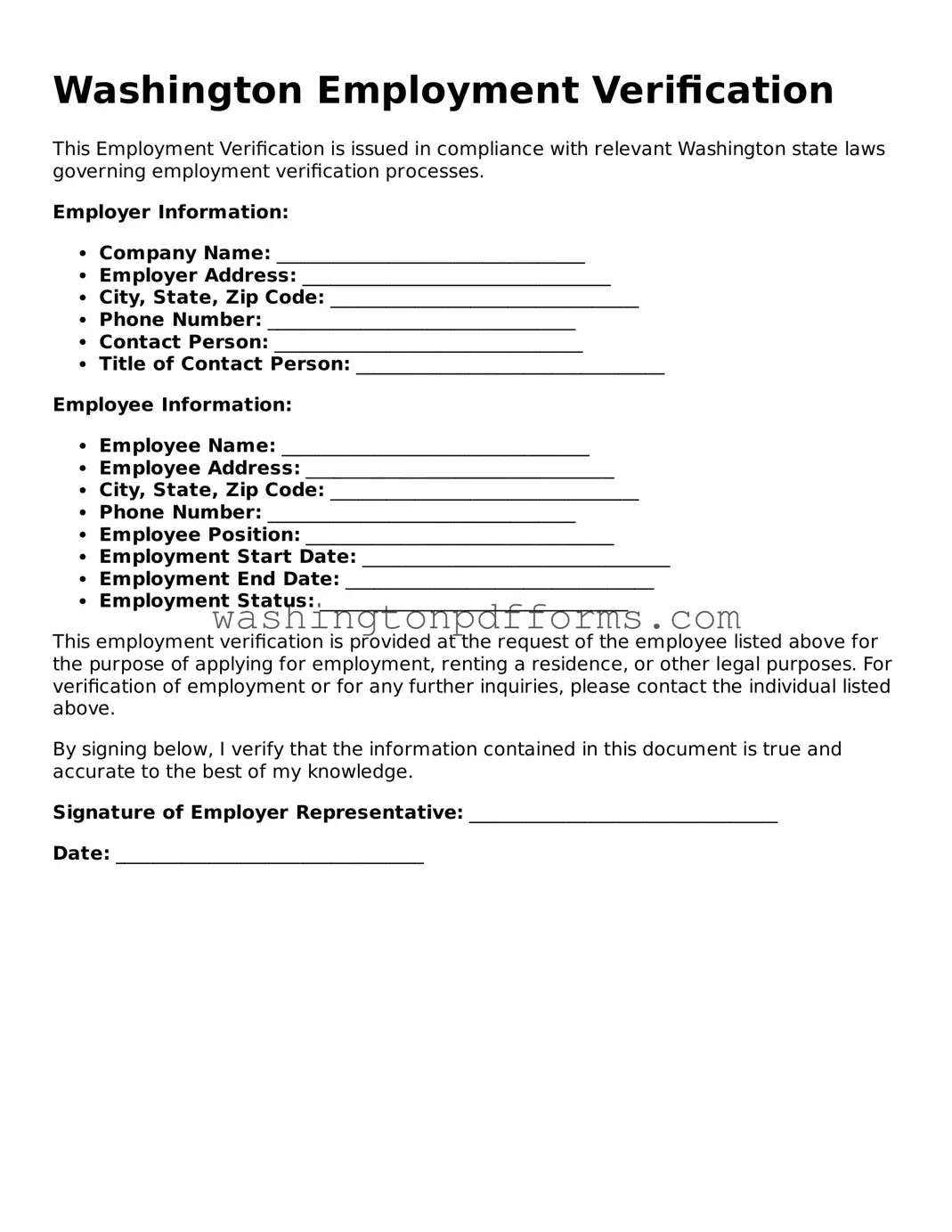Filling out the Washington Employment Verification form can be a straightforward process, but many individuals make common mistakes that can lead to delays or complications. One frequent error is providing inaccurate or incomplete personal information. This includes missing out on essential details such as the employee’s full name, social security number, or date of birth. Such omissions can hinder the verification process, causing unnecessary delays.
Another common mistake involves the incorrect listing of employment dates. Applicants sometimes misremember the start or end dates of their employment. This can create confusion and may lead to discrepancies that require further clarification. It's crucial to double-check these dates against official records to ensure accuracy.
Some people neglect to include the correct job title or description. Each position has specific responsibilities, and failing to accurately represent these can lead to misunderstandings about the employee's qualifications. Providing a detailed job description helps employers understand the role better and supports the verification process.
Additionally, individuals often forget to sign and date the form. A missing signature can render the document invalid. It is essential to review the entire form before submission, ensuring that all necessary fields are filled out and that the form is signed appropriately.
Using outdated or incorrect contact information for the employer is another mistake that can complicate the verification process. If the employer's phone number or address has changed, it may prevent the verification team from reaching out for confirmation. Keeping this information current is vital for a smooth verification process.
Some applicants fail to provide the necessary supporting documentation. While the Employment Verification form itself is crucial, additional documents may be required to substantiate the information provided. This could include pay stubs, tax forms, or previous employment records. Not including these can lead to further inquiries and delays.
Moreover, misunderstanding the purpose of the form can lead to incomplete submissions. Some individuals may think that the form is merely a formality and do not take the time to ensure all information is accurate and complete. Recognizing the importance of this document can encourage more thorough preparation.
Lastly, individuals sometimes overlook the importance of following instructions carefully. Each section of the form has specific requirements, and failing to adhere to these can result in rejection or requests for additional information. Taking the time to read and understand the instructions can significantly enhance the chances of a successful verification.
